Be Nice to Nettles
So, they may not be your favourite plant and they’ve certainly earned themselves a bad reputation. But we’re here to change your mind about nettles, as we think they’re definitely under-rated and all-in-all a fantastic plant!
Here are a few reasons why nettles are so great;
- They provide wonderful habitats for a whole host of wildlife.
- They’re a staple food source for a wide range of invertebrate species.
- If you’re into foraging, they can also be made into tasty meals and beverages for you too – we’ve linked a few recipes below for you to try at home.
- They’ve been used in archaeology; where they indicate where human settlements used to be after all other evidence has disappeared.
- They can produce sustainable fibre for material and clothing.
Knowing your Nettles
Common Nettle
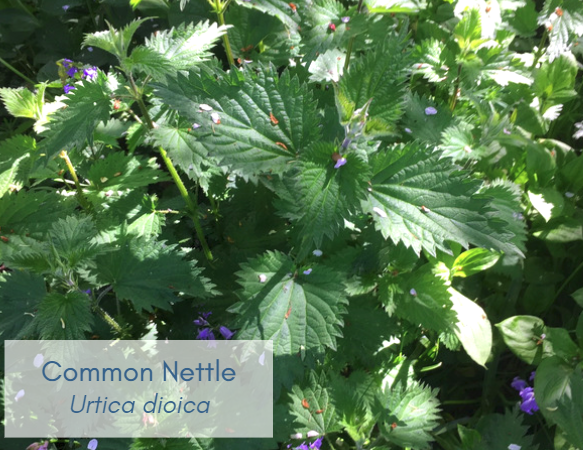
The common or stinging nettle (Urtica dioica) is a highly successful perennial flowering plant, which is found across all of the temperate world. It thrives in rich soils, which is why it does so well next to human settlements where organic matter is high. It can be identified by its toothed leaves which are held oppositely along the stem. Both the stems and leaves are covered with numerous stinging and non-stinging trichomes, or plant hairs. The tiny green or white flowers are borne in dense whorled clusters in the leaf axils and stem tips and are wind-pollinated. The plant can spread vegetatively with its yellow creeping rhizomes and often forms dense colonies.
Did you know? ‘Dioica’ means two houses, as the male and female nettle flowers are found on separate plants.
Dead Nettle

Dead nettles come in 2 flower colour varieties, white (Lamium album), red or purple (Lamium purpureum). They superficially look similar to the common nettle, however they do not sting. They probably evolved this form of batesian mimicry as a defence against predators. It can be identified by its whorls of pink-purple flowers clustered amongst leaves towards the top of the plant. The aromatic leaves are hairy, heart-shaped and have toothed edges. Some leaves near the top of the plant take on a purple tint. This plant can be mistaken for henbit dead-nettle which has similar flowers. They can be differentiated because red dead-nettle leaves have short petioles (leaf stalks). This plant likes arable and waste land and can also be found in gardens, hedgerows and on roadsides.
Henbit Dead Nettle
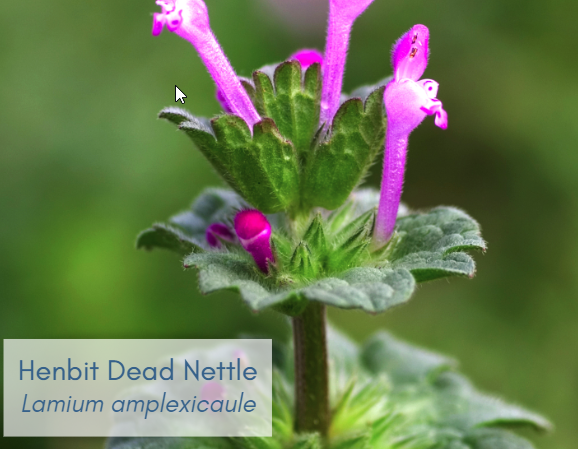
© Commons Wikimedia
This is a low to short hairy plant which is hardly branched. The leaves are hairy and kidney-shaped, with rounded teeth. The flowers are relatively large and form a few-flowered terminal spikes with a handful of whorls. It is found growing in open areas, gardens, fields and meadows.
Not so Nasty
A nettle’s sting is like a hypodermic needle. It’s a hollow hair which is made of silica and contains a venom, composed of histamine, acetylcholine and 5-hydroxytryptamine amongst other substances which have yet to be identified. The hair is extremely brittle and it only takes the lightest of brushes to break off the point and inject its unlucky victim.
However, it’s exactly this stinging power which has allowed a special relationship between nettles and over 40 species of invertebrates to develop. The invertebrates such as caterpillars, ladybirds and aphids are protected between the stinging hairs of the leaves from grazing animals, such as sheep and cattle. This bounty of insect prey, in turn, attracts amphibians, hedgehogs and agile woodland birds.
A few butterflies and moth species rely heavily on nettle patches for the larval and breeding stages of their lifecycles. These include the red admiral, small tortoiseshell, peacock and burnished brass.
Red Admiral
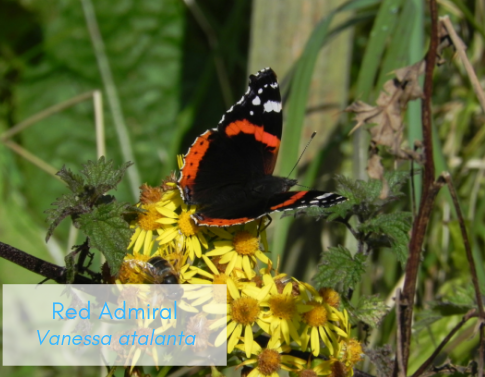
Although red admirals are a common sight in the British countryside, they are in-fact a seasonal migrant and can be seen as early as March. The females lay single eggs on the upper leaves of nettles, usually in the middle of large swathes of plants. The caterpillars emerge after 7 days and immediately begin folding nettle leaves into safety tents. The caterpillars come in 2 colour forms, a black and a yellowy-green.
Small Tortoiseshell
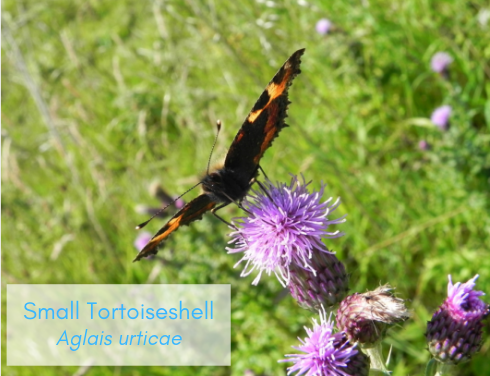
One of our commonest butterflies and early to emerge as soon as the weather becomes sunny and warm. The males secure and fervently defend territories over nettle patches. The females lay around 80 eggs which hatch 12 days later. The caterpillars are minute, black and yellow and start to spin silk tents around the nettle tips.
Peacock
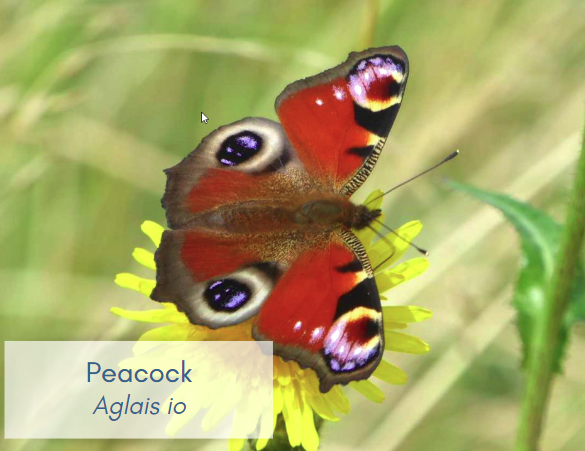
This distinctive butterfly, with its eye-spots to defend against predator attacks, emerges from hibernation in spring. The males are extremely territorial and will even chase away birds that have the audacity to invade their nettle patch. The females lay eggs in batches of over 200, on the tips of nettle leaves in full sunlight. The eggs hatch after around 10 days and release hoards of spiny black caterpillars which start to eat the leaves and stems.
Burnished Brass
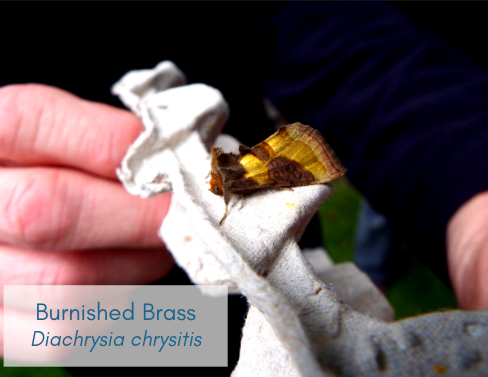
This beautiful, metallic moth is a common sight in the British Isles and found across a range of habitats, from woodland, gardens to wasteland and urban areas. The larvae hatch from eggs in later summer and after weeks of feeding begin to hibernate in the leaf litter underneath nettle patches. Cocoons are made on the underneath edges of leaves and the adults emerge 4 weeks later.
Not just for the insects….
If you’d like to try the taste of nettles for yourself (it’s a bit like spinach with a more earthy flavour), here are a few recipes for you to try.
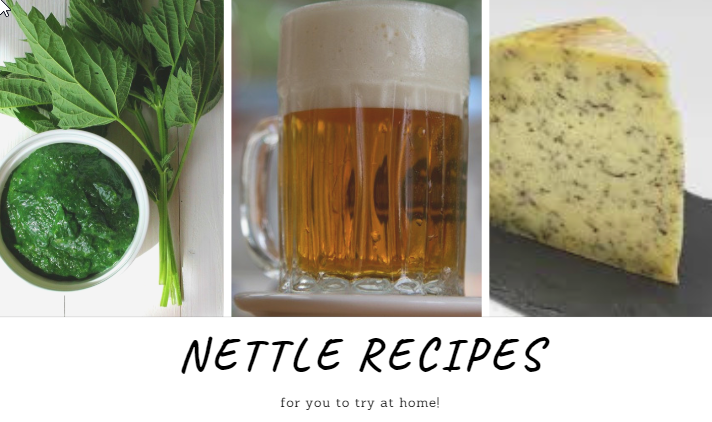
How about a tasty, warming nettle soup? https://bit.ly/2Jr0yhs
Or, if you’re a keen home brewer, why not infuse your latest batch with the flavours of nettle? https://bit.ly/2LSli3Q
And, one I can recommend myself, a traditional nettle cheese. https://bit.ly/2WdmeUe
When picking nettles, wear a pair of sturdy gardening gloves and remember the natural antidote to the stings (dock leaves!) are often close by.
Nettles are a truly underappreciated botanical, found in almost every garden and their abundance of benefits for both wildlife and humans shouldn’t be disregarded as easily as they are.
So, when you’re tending to your garden and pulling out weeds this summer, particularly this week – Be Nice to Nettles!
Rachel Mackay-Austin
Seasonal Visitor Centre Assistant / Teacher Naturalist
(Director RiverWood Ecology Ltd.)
Help protect Scotland’s wildlife
Our work to save Scotland’s wildlife is made possible thanks to the generosity of our members and supporters.
Join today from just £4 a month to help protect the species you love.
Preface
So, they may not be your favourite plant and they’ve certainly earned themselves a bad reputation. But we’re here to change your mind about nettles, as we think they’re definitely …
